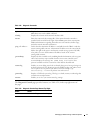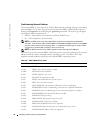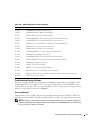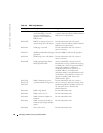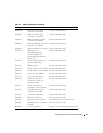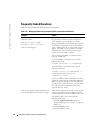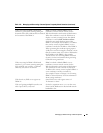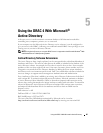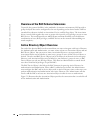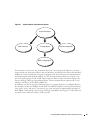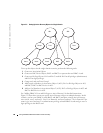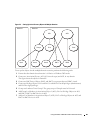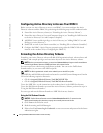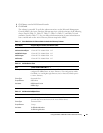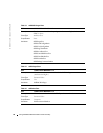
Using the DRAC 4 With Microsoft
®
Active Directory 85
Using the DRAC 4 With Microsoft
®
Active Directory
A directory service is used to maintain a common database of all information needed for
controlling users, computers, printers, etc. on a network.
If your company uses the Microsoft Active Directory service software, it can be configured to
give you access to the DRAC 4, allowing you to add and control DRAC 4 user privileges to your
existing users in your Active Directory software.
NOTE: Using Active Directory to recognize DRAC 4 users is supported on the Microsoft Windows
®
2000
and Windows Server™ 2003 operating systems.
Active Directory Schema Extensions
The Active Directory data, simply explained, can be conceptualized as a distributed database of
Attributes and Classes. The rules for what data can be added or included in the database is the
Active Directory schema. An example of a Class that is stored is the user class. Some example
attributes of the user class might be the user’s first name, last name, phone number, and so on.
Companies can extend the Active Directory database by adding their own unique Attributes
and Classes to solve environment-specific needs. Dell™ has extended the schema to include the
necessary changes to support remote management Authentication and Authorization.
Every Attribute or Class that is added to an existing Active Directory Schema must be defined
with a unique ID. To maintain unique IDs across the industry, Microsoft maintains a database
of Active Directory Object Identifiers (OIDs) so that when companies add extensions to the
schema, they can be guaranteed to be unique and not to conflict with each other. To extend the
schema in Microsoft's Active Directory, Dell received unique OIDs, unique name extensions,
and uniquely linked attribute IDs for our attributes and classes that are added into the
directory
service.
Dell extension is: dell
Dell base OID is: 1.2.840.113556.1.8000.1280
RAC LinkID range is:12070 to 12079
The Active Directory OID database maintained by Microsoft can be viewed at
http://msdn.microsoft.com/certification/ADAcctInfo.asp by entering our extension Dell.



